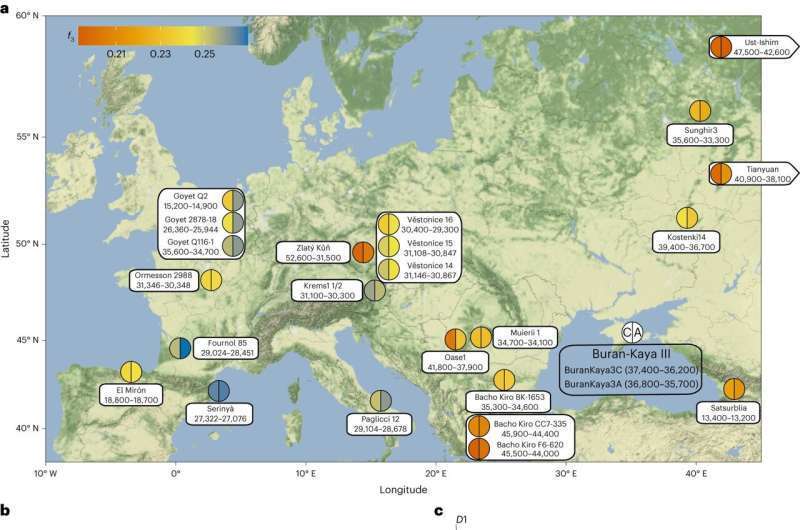News
Did ancient people migrate from Ukraine to Western Europe? Scientists have made a discovery
Scientists have examined fragments of a Homo sapiens skull found in Crimea in 2009 along with stone tools and pierced mammoth ivory beads. This made it possible to identify a link with the ancient DNA of people who settled Western Europe.
The journal Nature Ecology & Evolution published the results of the research. The skulls, which are approximately 37,000-36,000 years old, were found in the Buran Kai III archaeological site.
Scientists conducted analyses that helped to recreate the modern model of population movement in Europe during the Upper Paleolithic period (about 40,000-12,000 years ago). This period is characterized by the spread of anatomically modern people around the world.
The skulls indicate that these are the oldest representatives of Western Europe, who permanently settled in Europe and left traces in the genomes of modern Europeans.
Scientists believe that these individuals settled in the region after the Ice Age about 38,000 years ago. Also during this period, there was an eruption of a supervolcano near Naples, which covered southeastern and eastern Europe with ash.
This ecological crisis, combined with low temperatures, led to the extinction of Neanderthals and the first populations of Homo sapiens in the early Upper Paleolithic.
The people from Buran Kai III are linked to 740,000 genetic variations of other ancient individuals, indicating that they were part of the second wave of European settlement after the environmental crisis.
Scientists have also found that the DNA of the skulls found has a genetic link to modern and much later Caucasian populations. The tools found in the South Caucasus are similar to those found in Crimea. This indicates the direction of migration of the ancestors of Buran Kai III in Europe, namely from the Middle East through the Caucasus to the territory of modern Ukraine.
The strongest genetic link has been found between people from Buran Kaya III and populations in southwestern France, northeastern Spain, Austria, and the Czech Republic. These individuals are associated with the classical Gravettian period and were the creators of the iconic female ivory statuettes known as "Gravettian Venuses."
This indicates that the former were the ancestors of the latter and already practiced a culture that can be described as proto-Gravettian. Genetic links show that these populations spread from east to west.
Earlier, OBOZ.UA published a prediction of scientists that humanity could become extinct if the Southern Ocean disappears.
Subscribe to OBOZ.UAchannels in Telegram and Viber to keep up with the latest events.




























